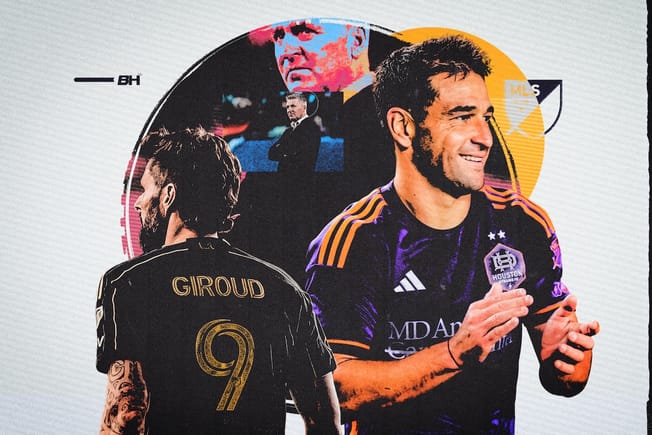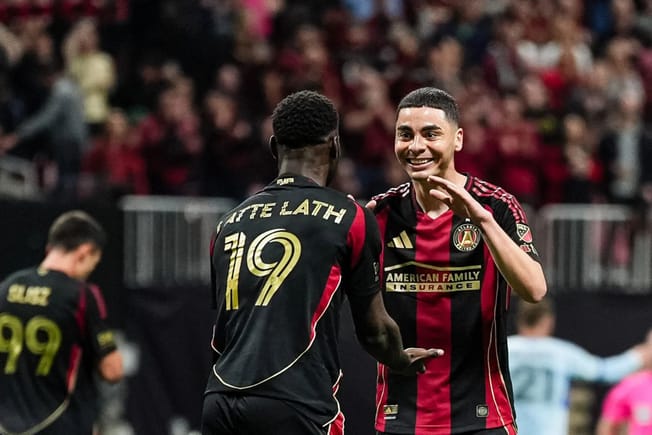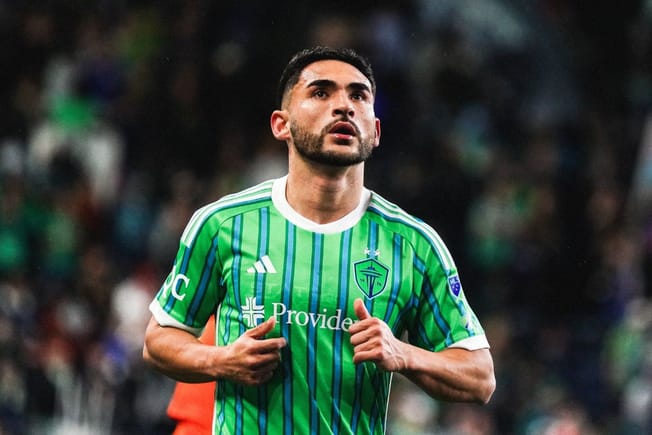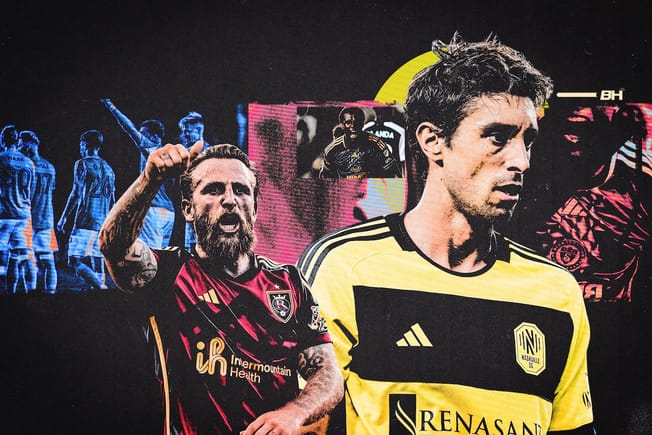Carson, Calif. — Sebastian Blanco bends over, putting his arm around Victor Vazquez at the edge of the center circle.
There’s a visible, undeniable level of respect between the pair of No. 10s. Blanco pulls the strings in the Portland Timbers’ attack, while Vazquez is regularly tasked with advancing the ball and creating chances in the final third for the LA Galaxy. Vazquez had just run into Diego Chara – MLS’s ever-present brick wall in central midfield. While Vazquez tried to play another few minutes before coming off in the 32nd minute on Saturday with a back injury, Galaxy manager Greg Vanney had smooth midfielder Efra Alvarez start to warm up on the sideline.
If Alvarez came on for Vazquez, LA would almost certainly keep their shape and mirror their own tactics from the game’s opening stages. But the young Mexican international didn’t step in for Vazquez. Instead, Vanney subbed on striker Dejan Joveljic, changing the team’s shape and changing bits of their tactical approach.
Portland’s approach didn’t change on Saturday. It rarely does under manager Gio Savarese. The Timbers love their 4-2-3-1 and they love their quick transition attacks. With Blanco playing point guard, Portland push runners forward to overwhelm opponents on the break. That’s exactly what happened in the 38th minute in Carson. The Timbers launched a counter attack, Blanco carried the ball forward on the left side, with Jarosław Niezgoda running on the right and Yimmi Chara streaking right up the middle.
Blanco, as he so often does, put just the right weight on a pass to Chara. Three touches later and the ball was in the back of Jonathan Bond’s net.
For better or for worse, the Portland Timbers are who they are – and they were good enough for a 1-1 draw over the weekend.
But who are the Los Angeles Galaxy? It’s not quite as clear right now.
So far this year, the Galaxy have almost always been a team that relies on a mixture of Chicharito’s movement in the box and quality service from a No. 10 and the wide players to create chances. They don’t high press. They don’t pressure the ball much at all, really. But they do get the ball into the box early and often in their 4-2-3-1 shape that caters to players like Vazquez and Alvarez, along with their under-performing wingers.
One look we’re seeing more and more from the Galaxy, though, is a two-forward front with Joveljic and Chicharito up front together. We saw it against the Timbers and we’ve seen it a handful of other times this season for short stretches as well. Stylistically, Joveljic and Chicharito are similar players – Vanney said as much after the match. Both rely on quality service and use their off-ball movement in the box to finish attacks close to goal. That’s exactly what Joveljic did for the late equalizer on Saturday.
NEVER COUNT US OUT 😤 pic.twitter.com/foWwNTK4SS
— LA Galaxy (@LAGalaxy) June 18, 2022
Joveljic is putting some pressure on Vanney to change his preferred shape from the 4-2-3-1 to either a 4-4-2 or a 3-5-2. The Los Angeles Galaxy used both of those two-forward fronts against the Timbers this weekend. The 22-year-old has 4 goals and 2 assists in limited minutes this year and is the Galaxy’s best player (among players with at least 300 minutes) when it comes to goals added per 96 minutes and their second best player in terms of total goals added this season.
There’s a stark contrast between Joveljic’s numbers up front and Kevin Cabral’s and Samuel Grandsir’s numbers out on the wing, hence the interest in either a 4-4-2 or a 3-5-2.
The Galaxy’s possession principles don’t totally change from one of those shapes to the others – at least not in the defensive and middle thirds. But there is a tradeoff when you play with two strikers instead of one. You sometimes lose some mobility when you play with two strikers, although it’s hard to imagine being less mobile than the 35-year-old Vazquez. You lose some of the connective tissue in midfield if you go to a flat 4-4-2 and put more of the playmaking burden on players who might not be well suited to making plays. The 3-5-2 could be the sweet spot for the Galaxy. It could be the shape that gets their best and most efficient attackers on the field together, while still putting numbers, ball-winners, and creators in central midfield.
It could.
But Vanney isn’t all-in on the 4-4-2 or the 3-5-2.
“There’s a tradeoff when you play with two forwards,” he said after the game on Saturday. “What do you lose? What do you gain from doing something like that? For us this (playing with two forwards for most of the game against Portland) was maybe a little bit of a sample of what that might look like.”
A sample, yes. But not a “primary look”, according to Vanney. To be fair, the Galaxy have some of the better underlying numbers in MLS. They’re not up at the top of the West, but they are one of the league’s stronger teams. Still, when you regularly spend millions on transfer fees and you’re one of MLS’s biggest spenders on salaries, it’s reasonable to expect LA to be more than good in the West. They should be great in the West.
Will Joveljic, Chicharito, and the two-forward front become something more than an occasional thing for the LA Galaxy as the season goes on? And will it help the Galaxy perform closer to their spending level?
We’ll find out. That choice that Vanney made in the first half on Saturday – between a No. 10 and another striker – isn’t going away any time soon.







Comments